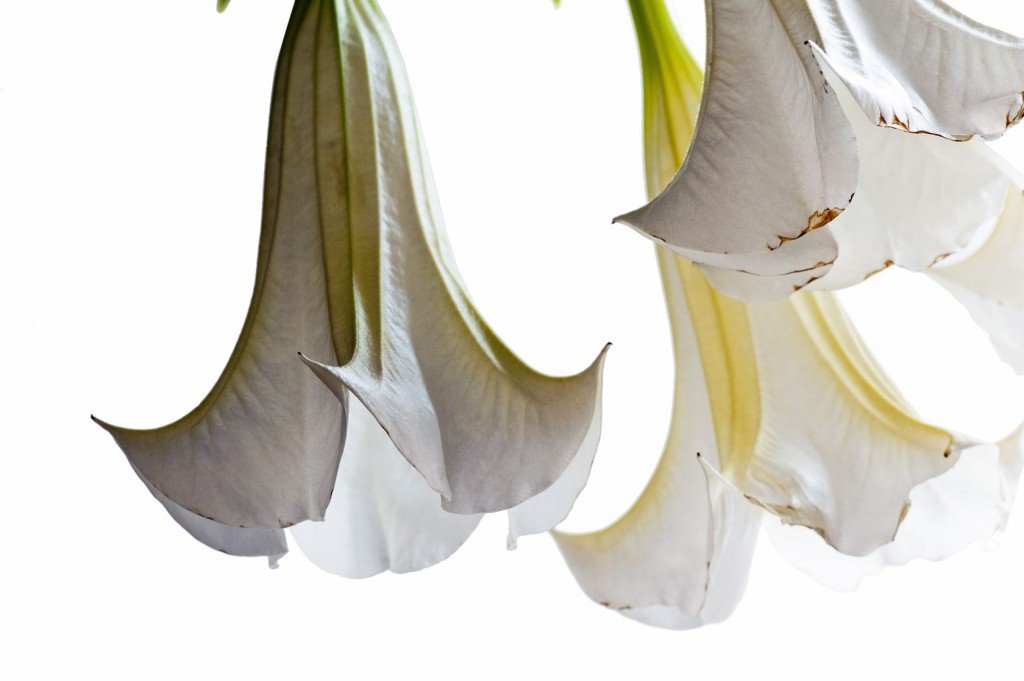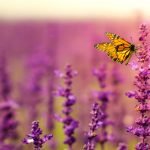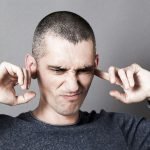Robin DiPasquale, ND, RH(AHG)
Pain – often a signal that something in the body requires attention – can arise from an array of etiologies. And although the goal for NDs is to treat the cause, relieving pain and suffering while keeping the cause in sight is a significant aspect of healing.
Herbal medicine can offer pain relief through several actions. Applying herbs specifically toward the etiology of the pain (e.g., spastic, neurological, hormonal, etc.) can determine the effectiveness of the treatment.
Analgesics
Corydalis ambigua, or C. yanhusuo, is one of the most effective herbs in the analgesic category. Known as Chinese Fumewort, some sources put this plant in the Fumariaceae family, some in the Papaveraceae family. It contains isoquinoline alkaloids, which give it antispasmodic activity about 50% the strength of plants containing papaverine (Boegge, 1996), and is noted to have direct interactions with opioid receptors (Reimeier, 1995). Preparation of the fresh tuber has shown stronger analgesic effects in vivo than the preparation from dried tuber (Liu, 1990). Other analgesic herbs include Piscidia erythrina (Jamaican dogwood), Eschscholzia californica (California poppy), Rabdosia rubescens (dong ling cao) and Stephania tetrandra (han fang ji).
Modifiers of inflammation contribute significantly to decreasing pain, including Curcuma longa (turmeric), Scutellaria baicalensis (Baikal skullcap), Boswellia serrata (boswellia); the berberine alkaloid plants Mahonia spp. (Oregon grape), Hydrastis canadensis (goldenseal) and Coptis chinensis (gold thread); and the salicylate herbs Salix spp.(willow), Filipendula ulmaria/Spiraea ulmaria (meadowsweet), Populus spp. (aspen/poplar), Betula spp. (birch), Viburnum prunifolium (black haw) and Gaultheria procumbens (wintergreen).
Because pain is so integrally linked to the nervous system, nerve tonics/trophorestoratives and antispasmodic herbs can play a role in treating pain: Avena sativa (oats) and Scutellaria lateriflora (blue skullcap), which are nerve trophorestoratives; Hypericum perforatum (St. John’s wort), which is specific for nerve pain from the homoepathic materia medica; and Passiflora incarnata (passionflower), Verbena spp. (vervain) and Turnera diffusa (damiana) could all be considered as adjuvants. There are many antispasmodic herbs to consider as well, the most overlooked being Dioscorea villosa (wild yam), Actaea racemosa (black cohosh), Lobelia inflata (lobelia) and Viburnum spp. Other categories of herbal action to include for relieving pain are demulcents, astringents, herbs that move fluids and herbs that enhance circulation.
The pharmaceutical isolated preparations of the opiates codeine and morphine are derivatives of the opium found in Papaver somnifera (opium poppy). Laudanum is a tincture of the unripe seed heads of the opium poppy, first compounded by Paracelsus in the 16th century. The synthetic opioid hydrocodone is derived from morphine, as is heroin.
Although these analgesic drugs are effective for relieving pain and can be essential in maintaining quality of life for people in severe pain, their side effects can dampen body functions, and they are extremely addictive.
Herbal analgesics cannot yield the degree of pain relief as these opioid pharmaceutical preparations; however, when working knowledgeably with the herbal materia medica, effective pain relief can be achieved while maintaining a quality of life. Drawing from the experiences of the Eclectic physicians, who practiced when the derivatives of opium were limited to laudanum, and from the teachings of naturopathic elders of years past, it has been established that clinical use of a group of low-dose herbs can be considered for both topical and internal applications to assist with managing pain. The alkaloids bring pain-relieving qualities but can be toxic in high doses, which is why they are referred to as low-dose herbs.
Alkaloids
Aconite: Aconitum napellus, also known as monk’s hood and wolfsbane, is a member of the Ranunculaceae family, a plant family where low dosing is usually applied. Aconite contains the highly toxic alkaloid aconitine from the terpenoid group. The action of this alkaloid on the body is to slow the heart via the vagus nerve. It is an analgesic, lessening pain and nerve irritation. JM Scudder says this remedy is to be given when there is difficulty in the capillary circulation, a dilatation and want of tone in these vessels, as it moderates the force and frequency of the heart and the tone of the blood vessels (Felter-Lloyd, 1983).
Because of the potential toxicity of aconite, internal use is generally limited to very dilute preparations. A 1:10 tincture is prepared, then 5-10 drops are put into 120 ml of water; ½ tsp should be given every half hour or 1 tsp every hour for pain.
Topical application can be quite effective used on its own or with the internal dosing. Ellingwood suggested an anodyne liniment using 1/3-part tincture to 100 parts witch hazel. Witch hazel liniment can be applied topically over sinuses for sinusitis pain; on the external throat for pharyngitis or tonsillitis; over the mastoid bone for otitis; on the face for facial neuralgia; or topically on areas of gout, herpes zoster and rheumatism. Witch hazel liniment should never to be used on mucous membranes (Ellingwood, 1919). Well-diluted water-based dilution can be sprayed into the throat or gargled and spit out for pharyngitis and tonsillitis, and for laryngitis that is painful (Felter, 1922). William Mitchell often would add 1-2 drops of aconite tincture to 1 oz ear oil for pain of otitis media.
For clarification, in the Chinese materia medica, Aconitum carmichaeli will often be used in internal formulas. This is Chinese aconite, also toxic, but is prepared by cooking it extensively with a group of other herbs, making it safe for internal use. Prepared aconite has the following functions:
- Restores devastated yang
- Warms the Kidney fire and strengthens the yang
- Warms the Kidneys and Spleen
- Expels cold, warms the channels and alleviates pain
This herb has anti-inflammatory effects, especially related to arthritic pain. It is also considered to have some analgesic effects through diminishing reflexes (Bensky and Gamble, 1986).
Yellow Jasmine: The root and rhizome of Gelsemium sempervirens (yellow jasmine) is used medicinally. G. sempervirens is a member of the Loganiaceae family, and contains the alkaloids gelsemine, gelseminine and gelsemoidin. It is a CNS relaxant, analgesic, vasodilator and antispasmodic, and it reduces pulse rate and blood pressure. Felter says Gelsemium is a remedy for pain associated with nervous tension. He says: “for the weak and apathetic, it has not value” (Felter, 1922). Keep this in mind when recalling the homeopathic indications for Gelsemium for flu-like symptoms described as dopey, droopy, drowsy and dumb. Let like cure like. Weiss discusses its indication in cardiovascular conditions as a cardiac sedative, and Ellingwood considers Gelsemium a most important heart remedy. Gelsemium has indications for expression of pain in many areas of the body due to its ability to address acute inflammation, including:
- Cerebral, spinal, cerebro-spinal or meningeal inflammation, useful for muscle twitching, facial neuralgias, trigeminal neuralgias, intercostal neuralgias (herpes zoster), headaches and sciatica (to a lesser degree). Weiss says Gelsemium is inferior to Aconitum for neuralgias.
- Acute peritonitis and appendicitis, and intestinal inflammations, combined with Atropa belladonna (deadly nightshade) and its gastrointestinal affinity.
- Female reproductive inflammation in dysmenorrhea, ovaritis, metritis, salpingitis and mastitis, and also in labor when the os is rigid and unyielding. For women in labor, Dr. Bastyr used 30 gtt of a G. sempervirens tincture (Mitchell, 2003).
- Respiratory inflammation, spasmodic coughs and asthma.
- Urinary tract inflammation, including nephritis and cystitis; possibly useful for vulvodynia, depending on the etiology.
- Joint and muscle inflammation, including rheumatism, combined with Actea racemosa for muscle spasm.
Dosing from Ellingwood recommends Gelsemium fluid extract, ½ to 10 minims daily, tincture 5-30 minims daily (one minim is 1/480 of an ounce, or approximately 2 drops). Current naturopathic dosing of tincture of root and rhizome is recommended at 2-5 gtt 2-3 times per day, not a significant difference.
Ellingwood also suggested 5 gtt to 100 ml water, 1 tsp qh in particular for children.
Other Low-Dose Herbs
The following three low-dose herbs – Atropa belladonna, Hyoscyamus niger (black henbane) and Datura stramonium (jimson weed) – are members of the Solanaceae family, containing the tropane alkaloids that are found exclusively in this family of plants. As a group, they are anticholinergic, decreasing smooth muscle spasm and drying secretions. The scopolamine gives an anti-emetic action, found only in H. niger and D. stramonium. Interestingly, although they will act on all smooth muscle throughout the body, they each have an affinity for different organ systems.
Atropa belladonna contains the alkaloid hyoscyamine, some atropine and very little scopolamine (Yarnell, 2002). As an antispasmodic, Atropa belladonna has an affinity for the gastrointestinal tract, including stomach, intestines and bile ducts. The mydriatic action is how belladonna got the “belladonna” name, translated as “beautiful woman,” due to the enlarged pupils accentuating the eyes.
Internal use of Atropa belladonna is specific for pain from congestion – headaches, muscle aches, joint pain, and pain in congested organs. This herb is specific for spastic pain with congestion in the viscera of the abdomen related to tubular organs, including those of the GI tract, reproductive system (male and female) and urinary tract. Spastic respiratory organs, especially tubular ones, are greatly benefited from using belladonna, with a specific indication for whooping cough. The Eclectic physicians are very specific in differentiating its use for spastic conditions with congestion, otherwise the remedy will not be indicated (Felter, 1922).
Dosing for belladonna according to the British Herbal Compendium (BHC, vol. 1) is dry herb 200 mg (max 1 g) per week, tincture 1:10, 70% from the leaves 2 ml (max 10 ml) per week. Weiss reports that to get satisfactory action for GI spasm, you have to go as close to the limit of tolerance as possible. Ellingwood suggested 5 gtt of tincture in 100 ml water, dosing 1 tsp qh prn. The fluid extract is prepared from the roots, dosed at 1/20 to 1 gt, much lower than the tincture (Felter, 1922).
Belladonna unguentum, an ointment prepared from the leaves, can be used for pruritis, urticaria and hyperhydrosis. The unguentum is also used for topical application over inflamed and painful areas, including joints, hemorrhoids and fissures, inflamed glands, areas of neuralgia, myalgia, mastitis and pleurodynia.
Belladonna is contraindicated in glaucoma, rapid heart, pregnancy, and enlarged prostate.
Hyoscyamus niger contains 75% hyoscyamine and 24% scopolamine (Yarnell, 2002). Its actions are analgesic and antispasmodic, a powerful brain relaxant and sedative. Hyoscyamus inhibits the release of acetylcholine to subdue excitatory stimulation. Specific symptoms indicating the need for Hyoscyamus niger are nervous irritation without congestion or the disturbance of circulation in the cerebrum (Felter-Lloyd, 1983). This herb is dose dependent: Use smaller doses for nervous irritability and irritation in cases of cerebral depression requiring stimulation, and larger doses for mental excitation requiring sedation of cerebral stimulation. Hyoscyamus has an affinity for the nervous system and, in particular, the peripheral nervous system. It can be used for motion sickness due to the scopolamine.
A poultice of fresh leaves can be used topically for an area of inflammation and pain, including rheumatism. Topical application of tincture or infused oil can also be used. Felter-Lloyd describes an ointment of Hyoscyamus applied topically for hemorrhoids and a liniment made from 1 drachm henbane, 4 drachms white soap and 12 fl oz linseed oil applied 2-3 times a day with considerable friction for glandular swellings.
Internal dosing of Hyoscyamus niger: powdered leaves from 2-10 grains, tincture 1:10, 30 gtt to 2 fluid drachms (Felter-Lloyd, 1983).
Datura stramonium, called jimson weed or thorn apple, contains 65% hyoscyamine and 32% scopolamine (Yarnell, 2002), the highest of the three in scopolamine and making it the first choice for motion sickness. One application for motion sickness is to place a folded leaf behind the ear. The actions are antispasmodic, nerve sedative, anodyne and anti-asthmatic.
Datura stramonium can be clinically applied in similar ways as Hyoscyamus and belladonna; however, D. stramonium has an affinity for the respiratory system, yielding sympathetic relief and relaxing bronchial smooth muscle. It was traditionally smoked, with Lobelia and Verbascum (mullein), for asthma. Other applications are neuralgias, dysmenorrhea, glandular inflammations like parotitis, and in mastitis, orchitis, pleuritis, peritonitis and rheumatic inflammation.
Extraction is made from the seeds, fluid extract dosed at 1-5 minims or used in Unguentum Stramonii for topical application (Ellingwood, 1919). The British Pharmacopeia dose for liquid extract is 0.06-0.2 ml, while the 1:10 tincture is 0.5-2 ml. Fresh poultice or fomentation can be applied to rheumatic joints and glandular swellings.
- Stramonium is contraindicated in heart failure, abnormal irritability, prostatitis, pregnancy and with antidepressants.
 Robin DiPasquale, ND, RH(AHG) earned her degree in naturopathic medicine from Bastyr University in 1995 where, following graduation, she became a member of the didactic and clinical faculty. For the past eight years, she has served at Bastyr as department chair of botanical medicine, teaching and administering to both the naturopathic medicine program and the bachelor of science in herbal sciences program. Dr. DiPasquale is a clinical associate professor in the department of biobehavioral nursing and health systems at the University of Washington in the CAM certificate program. She loves plants, is published nationally and internationally, and teaches throughout the U.S. and in Italy about plant medicine. She is an anusara influenced yoga teacher, teaching the flow of yoga from the heart. She currently has a general naturopathic medicine practice in Madison, Wis., and is working with the University of Wisconsin Integrative Medicine Clinic as an ND consultant.
Robin DiPasquale, ND, RH(AHG) earned her degree in naturopathic medicine from Bastyr University in 1995 where, following graduation, she became a member of the didactic and clinical faculty. For the past eight years, she has served at Bastyr as department chair of botanical medicine, teaching and administering to both the naturopathic medicine program and the bachelor of science in herbal sciences program. Dr. DiPasquale is a clinical associate professor in the department of biobehavioral nursing and health systems at the University of Washington in the CAM certificate program. She loves plants, is published nationally and internationally, and teaches throughout the U.S. and in Italy about plant medicine. She is an anusara influenced yoga teacher, teaching the flow of yoga from the heart. She currently has a general naturopathic medicine practice in Madison, Wis., and is working with the University of Wisconsin Integrative Medicine Clinic as an ND consultant.
References
Bensky D, Gamble A: Chinese Herbal Medicine: Materia Medica. Seattle, 1986, Eastland Press, pp 428-31.
Boegge SC et al: Reduction of ACh-induced contraction of rat isolated ileum by coptisine, (+)-caffeoylmalic acid, Chelidonium majus, and Corydalis lutea extracts, Planta Medica 62(2):173-174, 1996.
Bruneton J, Pharmacognosy (2nd ed). Paris, 1999, Intercept Ltd.
Chernevskaja NI et al: Inhibitions of the GABA-induced currents of rat neurons by the alkaloid isocoryne from the plant Corydalis pseudoadunca Toxicon 28(6):727-730, 1990.
Ellingwood F: American Materia Medica, Therapeutics and Pharmacognosy. Sandy, 1919, Eclectic Medical Publications.
Felter HW: The Eclectic Materia Medica, Pharmacology and Therapeutics, Sandy, 1922, Eclectic Medical Publications.
Felter HW, Lloyd JU: King’s American Dispensatory (vols and II). Portland, 1983, Eclectic Medical Publications.
Herbert JM et al: Chelerythrine is a potent and specific inhibitor of protein kinase C, Biochemical and Biophysical Research Communciations 172:993-999, 1990.
Liu L et al: Comparison of analgesic effect between locally vinear-processed preparation and fresh rhizoma Corydalis and traditionally prepared vinegar-processed rhizoma Corydalis, Chung Kuo Chung Yao Tsa Chih 15(11):666-667, 702, 1990.
Mitchell W: Plant Medicine in Practice, Using the Teachings of John Bastyr. St. Louis, 2003, Churchill Livingstone.
Reimeier C et al: Effects of ethanolic extracts from Eschscholtzia californica and Corydalis cava on dimerization and oxidation of enkephalins, Arzneimittelforschung 45-1(2):132-136, 1995.
Weiss R: Herbal Medicine (6th ed). Beaconsfield, 1988, Beaconsfield Publishers Ltd.
Yarnell E: Phytochemistry and Pharmacy for Practitioners of Botanical Medicine. Wenatchee, 2002, Healing Mountain Publishing.
Yashpal K et al: Noxious thermal and chemical stimulation induce increases in 3H-phorbol 12,13-dibutyrate binding in spinal cord dorsal horn as well as persistent pain and hyperalgesia, which is reduced by inhibition of protein kinase C, Journal of Neuroscience 15:3263-72, 1995.





